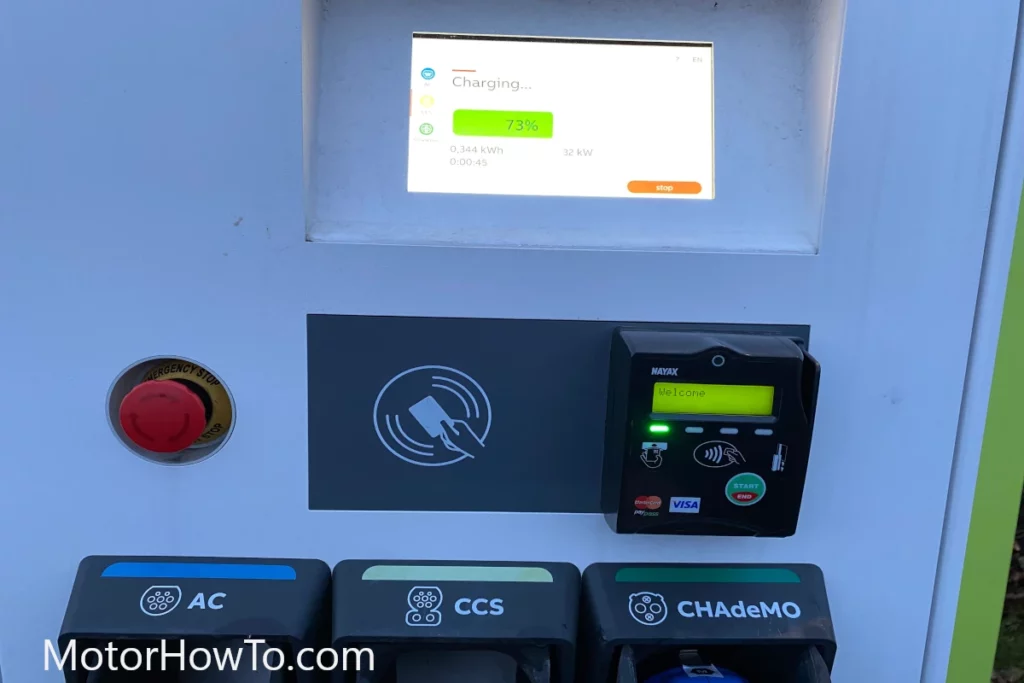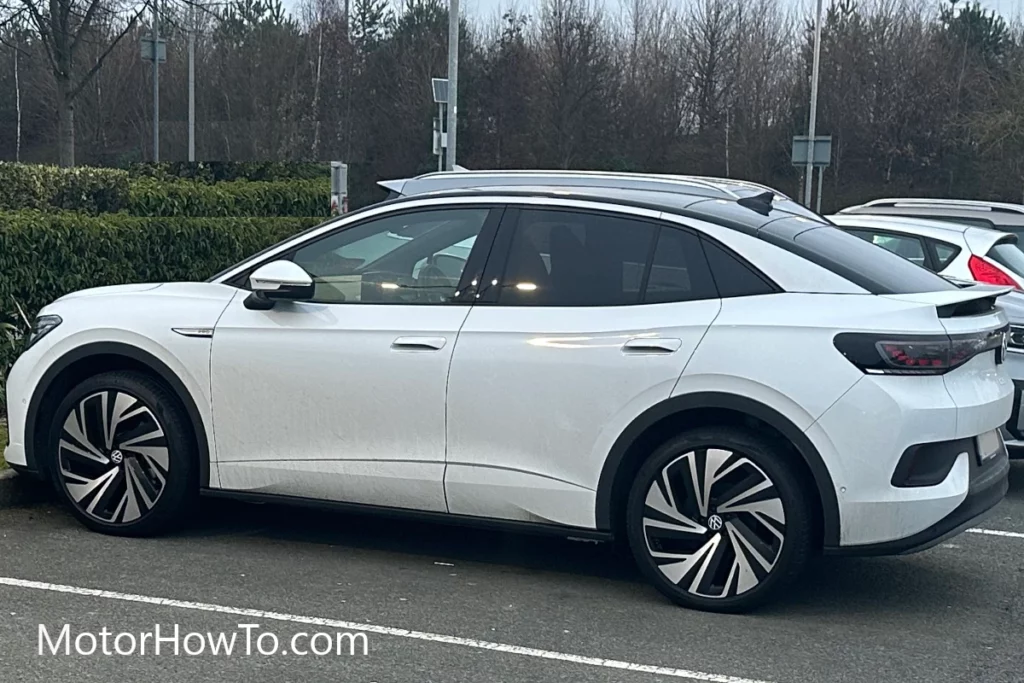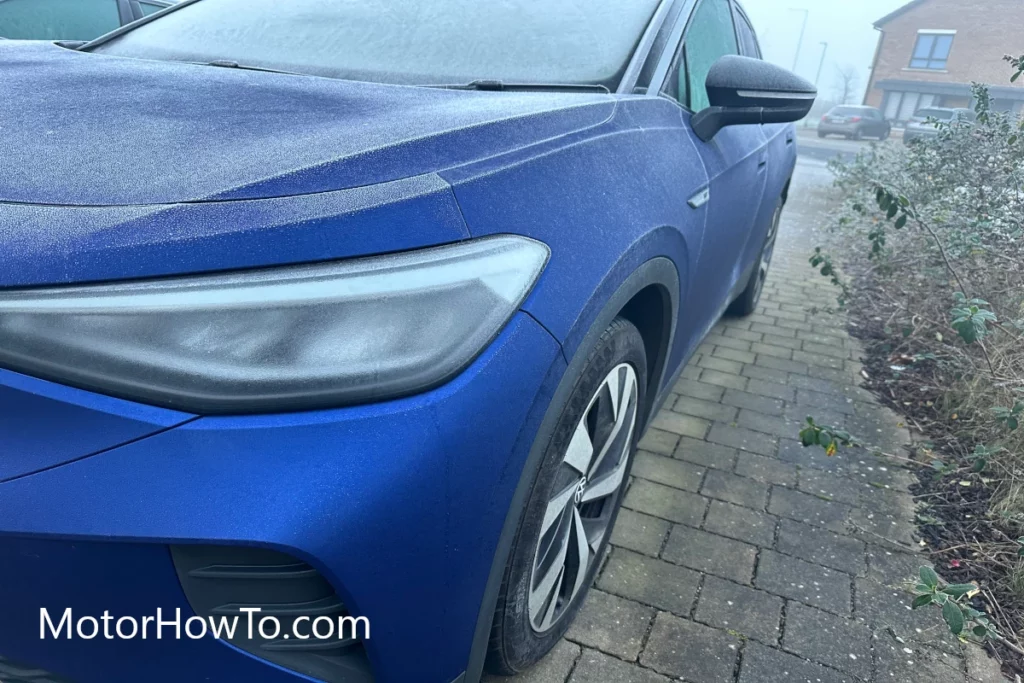In our journey towards a sustainable future, the choices we make in our daily lives, particularly regarding personal transportation, play a crucial role.
This article delves into the intricate world of eco-conscious motoring, specifically through the lens of one of the latest entrants in the electric vehicle market.
As we unravel the layers of its environmental footprint, we invite readers to explore a comprehensive analysis that balances innovation with responsibility.
The Volkswagen ID’s environmental impact is lower than that of traditional vehicles due to zero emissions, energy-efficient production, and sustainable battery usage. However, factors like electricity sources still influence its eco-footprint.

As you delve deeper into the article, expect an in-depth exploration of various facets of the Volkswagen ID’s environmental impact.
We will examine its manufacturing process, the sustainability of its components, its operational efficiency, and the broader implications of its adoption on global environmental goals.
This analysis aims to provide a well-rounded perspective, essential for anyone considering the shift to electric vehicles.
Related:
- The Future is Now: Autonomous Driving Capabilities of the VW ID
- Guide to Upgrading Features in Your Volkswagen ID (Explained)
- Handling and Performance of Volkswagen ID Series (Analyzed)
Manufacturing Footprint: Beyond the Assembly Line
When assessing the environmental impact of driving a Volkswagen ID, it’s essential to look beyond the glossy finish and advanced technology of the finished product.
This electric vehicle (EV) journey starts long before it hits the road, beginning at the heart of its manufacturing process.
This stage is critical in understanding the overall ecological footprint of the Volkswagen ID.
The Volkswagen Group has made significant strides in adopting sustainable practices in its manufacturing facilities.
However, the production of electric vehicles poses its own unique set of challenges and opportunities. For starters, the manufacturing of EVs generally requires more energy than traditional vehicles, primarily due to the production of lithium-ion batteries.
These batteries, the powerhouse of any electric vehicle, are resource-intensive to produce, necessitating mining materials like lithium, cobalt, and nickel.
However, it’s not just about the materials; it’s also about how they are sourced and processed. Volkswagen has been proactive in ensuring that the materials for their batteries are obtained responsibly.
The company has implemented various initiatives to minimize the environmental impact of its supply chain, focusing on responsible mining practices and striving to improve the energy efficiency of its production facilities.
Another critical aspect of the manufacturing footprint is the energy source used in the production facilities.
Volkswagen has committed to using renewable energy sources like wind and solar power in their plants, significantly reducing the carbon footprint of the manufacturing process.
This shift to greener energy aligns with their sustainability goals and sets a precedent in the automotive industry.
The Volkswagen ID’s production involves advanced recycling techniques and waste reduction strategies.
From the outset, the ID design incorporates recyclability, ensuring that the vehicle’s components can be reused or repurposed at the end of its life cycle, thus minimizing waste and conserving resources.
The manufacturing footprint of the Volkswagen ID extends far beyond the assembly line. It encompasses a holistic approach to sustainability, from sourcing raw materials to implementing renewable energy in production facilities.
By understanding these factors, we gain a clearer picture of the true environmental impact of driving a Volkswagen ID, highlighting the intricate balance between technological advancement and ecological responsibility.
The Lifecycle of Batteries: A Sustainable Perspective

The environmental impact of electric vehicles like the Volkswagen ID is inextricably linked to the lifecycle of their batteries.
This aspect covers everything from extraction of raw materials to end-of-life disposal or recycling. Understanding this lifecycle provides crucial insights into the sustainability of EVs.
Raw Material Extraction and Processing
- Mining Practices: The extraction of lithium, cobalt, and other essential battery materials is energy-intensive and often associated with environmental concerns.
- Responsible Sourcing: Volkswagen focuses on ethically sourcing these materials, minimizing environmental damage.
- Reducing Carbon Footprint: Efforts are made to use renewable energy sources during the extraction and processing.
Manufacturing and Assembly
- Energy Use: The production of lithium-ion batteries is more energy-intensive compared to traditional car batteries.
- Sustainable Manufacturing: Volkswagen is investing in energy-efficient manufacturing processes.
- Renewable Energy Sources: Utilizing solar and wind energy in battery production plants to lower overall emissions.
Usage Phase
- Longevity and Efficiency: A key factor in sustainability is the lifespan and performance of the battery during the vehicle’s operational life.
- Enhanced Battery Life: Continuous advancements in battery technology aim to increase lifespan and efficiency, reducing the need for frequent replacements.
- Energy Management: Software updates and efficient energy management systems ensure optimal battery usage.
End-of-Life Management
- Recycling and Repurposing: Proper disposal and recycling of EV batteries are critical for environmental sustainability.
- Recycling Programs: Volkswagen is developing robust recycling programs to ensure batteries are disposed of responsibly.
- Second-Life Uses: Exploring opportunities to repurpose used EV batteries for energy storage solutions.
Future Innovations
- Next-Generation Batteries: Research into alternative battery technologies that are less resource-intensive and more environmentally friendly.
- Solid-State Batteries: Potential for higher energy density, longer life, and safer operation.
- Reducing Dependence on Scarce Materials: Efforts to develop batteries with fewer rare earth elements.
The lifecycle of batteries in electric vehicles like the Volkswagen ID presents challenges and opportunities for sustainable practices.
From the initial stages of raw material extraction to the final phases of recycling and repurposing, each step in the battery’s lifecycle contributes significantly to the overall environmental impact of the vehicle.
As technology advances, manufacturers like Volkswagen must prioritize sustainability in battery production and management.
Operational Efficiency and Energy Sources

The environmental credentials of the Volkswagen ID extend well beyond its zero-emission status.
To fully grasp its ecological impact, we must examine two key aspects: its operational efficiency and the sources of energy that power it.
These elements are crucial in painting a complete picture of the vehicle’s environmental footprint.
A Closer Look at Operational Efficiency
- Maximizing Energy Usage: The Volkswagen ID is engineered for optimal energy utilization. Unlike traditional combustion engines, electric vehicles (EVs), including the ID, use their energy more efficiently, translating into more miles per kilowatt-hour.
- Design and Technology: The ID’s design integrates features that enhance its efficiency:
- Aerodynamic Build: Its design reduces drag, allowing it to use energy more efficiently.
- Regenerative Braking: This feature captures energy typically lost during braking, converting it into additional battery power.
- Reduced Maintenance Impact: The Volkswagen ID also scores points for its reduced maintenance needs, a byproduct of its electric powertrain:
- Minimal Wear and Tear: Fewer moving parts mean less frequent need for replacements.
- No Oil Changes: This eliminates a significant environmental impact associated with traditional vehicles.
The Influence of Energy Sources
- Powering the ID: The environmental benefit of driving the Volkswagen ID is significantly influenced by how the electricity that charges it is generated.
- Clean Energy Grids: In regions where electricity is predominantly generated from renewable sources, the ID’s environmental benefits are maximized.
- Dependence on Fossil Fuels: Where electricity generation is still heavily reliant on fossil fuels, the overall environmental advantages, though still present, are somewhat diminished.
- The Shift in Energy Production: As the global energy grid becomes increasingly green, with a growing reliance on renewable sources, the environmental advantages of EVs like the ID are set to amplify.
- Renewable Energy Developments: Technological advancements and policy shifts toward renewable energy sources pave the way for cleaner electric mobility.
- Charging Practices and Infrastructure: Where and how the ID is charged affects its environmental impact.
- Charging Efficiency: Fast charging, while convenient, may lead to higher energy demands and potential battery longevity issues.
- Home Solar Charging: Owners charging their ID with solar power at home can significantly reduce its environmental impact.
The true environmental impact of the Volkswagen ID is a combination of its inherent operational efficiencies and the nature of the electricity that powers it. As the vehicle takes advantage of design and technology advancements and the world’s energy grid becomes greener, the Volkswagen ID stands as a beacon of sustainable mobility.
The Bigger Picture: Electric Vehicles and Global Sustainability Goals
The emergence of electric vehicles (EVs) like the Volkswagen ID represents a pivotal moment in our quest for environmental sustainability.
These vehicles are more than just an alternative to traditional combustion engines; they embody a significant step toward achieving global sustainability goals. This shift is crucial in tackling some of our time’s most pressing environmental challenges.
Key Contributions of EVs to Sustainability Goals:
- Reduction in Greenhouse Gas Emissions: EVs, including the Volkswagen ID, produce zero emissions during operation, directly contributing to reduced air pollution and greenhouse gas emissions.
- Energy Efficiency: Electric vehicles are inherently more efficient than their gasoline counterparts, meaning less energy is wasted and more is used for actual transportation.
- Promotion of Renewable Energy: The rise of EVs accelerates the demand for renewable energy sources, as they offer the most environmental benefit when powered by clean energy.
- Decrease in Noise Pollution: EVs are considerably quieter than traditional vehicles, contributing to lower noise pollution levels in urban areas.
- Recycling and Sustainability Initiatives: The EV industry increasingly focuses on battery recycling and sustainable material sourcing, further enhancing its environmental credentials.
As the world grapples with climate change and environmental degradation, the role of electric vehicles becomes increasingly significant. The Volkswagen ID and other EVs stand at the forefront of this movement.
They are not just vehicles; they symbolize a more sustainable future, where transportation no longer contributes to environmental harm but aligns with the planet’s health and well-being.
Integrating electric vehicles into our daily lives is more than a technological evolution; it’s a necessary step toward realizing our global sustainability goals.
With each Volkswagen ID on the road, we move closer to a cleaner, more efficient, and more sustainable mode of transportation, marking a positive stride in our collective journey toward a greener future.
The potential of EVs extends far beyond individual benefits, contributing to a larger vision of an environmentally conscious and sustainable world.
Sources
From creation to recycling: the life cycle assessment of the ID.3



